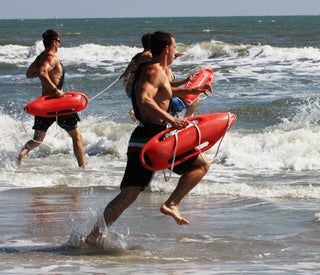Introduction
When you think about the beach or a pool, the image of a lifeguard often comes to mind. They’re the ones keeping an eye on everyone, ready to spring into action if something goes awry lifeguard. But did you know that behind every vigilant lifeguard is a whole lot of specialized gear and equipment designed to maximize safety? In this blog post, we’re diving deep into the best lifeguard gear and equipment for maximum safety. Whether you’re a seasoned pro or just getting started, having the right tools can make all the difference.

Essential Lifeguard Gear
Lifeguard Uniform
A lifeguard’s uniform is more than just a uniform—it’s a crucial part of ensuring safety. The right lifeguard gear should be comfortable, allowing for swift movement while still being highly visible. Bright colors like red or neon yellow are popular choices because they stand out against the backdrop of water and sand.
Features of an Effective Uniform
An effective lifeguard uniform typically includes:
- Moisture-wicking fabric: Keeps the lifeguard dry and comfortable.
- Durability: Designed to withstand sun, water, and sand.
- Easy identification: Clearly displays lifeguard status.
Importance of Visibility
Visibility isn’t just about looking good; it’s essential for safety. Swimmers need to quickly identify lifeguards in case of an emergency, and a bright uniform plays a huge role in that.
Rescue Tube
One of the most iconic pieces of lifeguard equipment is the rescue tube. This inflatable device is designed to assist a distressed swimmer without putting the lifeguard at risk.
Design and Functionality
The rescue tube is lightweight and buoyant, allowing lifeguards to throw it to someone in trouble. Most tubes have a shoulder strap for easy carrying.
How to Use a Rescue Tube
Using a rescue tube is simple:
- Approach the swimmer while keeping the tube between you and them to ensure safety.
- Extend the tube to the distressed swimmer.
- Instruct them to grab the tube and pull them to safety.
Personal Flotation Devices (PFDs)
Personal flotation devices, or PFDs, are a must-have for lifeguards working in various aquatic environments.
Types of PFDs
Different situations call for different PFDs. Here are a few types:
- Life jackets: Ideal for rough water conditions.
- Buoyant vests: Suitable for calm waters and easier to swim in.
How PFDs Enhance Safety
PFDs are essential because they keep both the rescuer and the victim safe. A lifeguard wearing a PFD can assist in rescues without risking their own safety.
First Aid Equipment
First Aid Kit
Every lifeguard station should have a comprehensive first aid kit, stocked with essential items to handle minor injuries and emergencies.
Essential Items to Include
Here are a few must-haves:
- Band-aids and gauze
- Antiseptic wipes
- Adhesive tape
- Cold packs
Importance of Regular Checks
Regularly checking your first aid kit ensures that supplies are not expired and that you have everything you need ready to go.
Automated External Defibrillator (AED)
Having an AED on-site is crucial. This life-saving device can help someone experiencing a cardiac emergency.
What is an AED?
An AED is a portable device that checks the heart rhythm and can send an electric shock to the heart to try to restore a normal rhythm.
AED Accessibility in Emergencies
Lifeguards should be trained in using AEDs, and they must be easily accessible in emergency situations, ideally placed near the lifeguard station.
Communication Devices
Effective communication is vital in lifeguarding.
Two-Way Radios
Two-way radios keep lifeguards connected with each other and other staff members, ensuring a swift response to any situation.
Importance in Lifeguarding
In emergency situations, a quick relay of information can be life-saving.
Best Practices for Use
Always ensure radios are charged and within reach during shifts.
Whistles
A whistle is a lifeguard’s best friend. It’s an effective way to communicate with swimmers and other lifeguards without yelling.
Effective Communication Tools
Whistles are especially useful in crowded areas where verbal commands may not be heard.
How to Use Whistles Properly
Use short blasts to get attention and longer blasts for emergencies. Be sure to practice your whistle skills to ensure you’re heard!
Sun Protection Gear
Lifeguards spend long hours under the sun, so protecting themselves from UV rays is essential.
Sunscreen
Sunscreen with a high SPF is a must for all lifeguards.
SPF Ratings and Importance
Look for broad-spectrum protection with an SPF of at least 30.
How to Apply Sunscreen Effectively
Apply sunscreen 15-30 minutes before going outside and reapply every two hours, especially after swimming.
Sunglasses and Hats
Wearing sunglasses and a wide-brimmed hat can protect against sun damage.
Benefits of Eye and Head Protection
Quality sunglasses shield your eyes from harmful UV rays, while hats provide shade for your face and neck.
Choosing the Right Sunglasses
Opt for polarized lenses that offer maximum protection and comfort.
Footwear for Lifeguards
Water Shoes
Good footwear can prevent slips and falls on wet surfaces.
Features of Good Water Shoes
Look for shoes that offer traction, are quick-drying, and have comfortable fits.
Importance of Traction and Comfort
Proper footwear helps lifeguards maintain balance and confidence on slippery surfaces.
Additional Lifeguard Tools
Rescue Board
A rescue board can be a game changer, especially in ocean rescues. It allows lifeguards to reach distressed swimmers quickly and safely.
Fins and Snorkel Gear
In some situations, fins and snorkel gear can help lifeguards reach victims faster.
Personal Floatation Device (PFD) for Rescue
Some PFDs are specifically designed for lifeguards, providing added buoyancy and support.
Conclusion
Having the right gear and equipment is critical for lifeguards to ensure maximum safety for themselves and the people they protect. From uniforms to rescue tools and sun protection, being prepared is key. So, whether you’re new to lifeguarding or have been in the game for years, make sure your gear is top-notch and ready to go. Safety isn’t just a priority; it’s a responsibility.